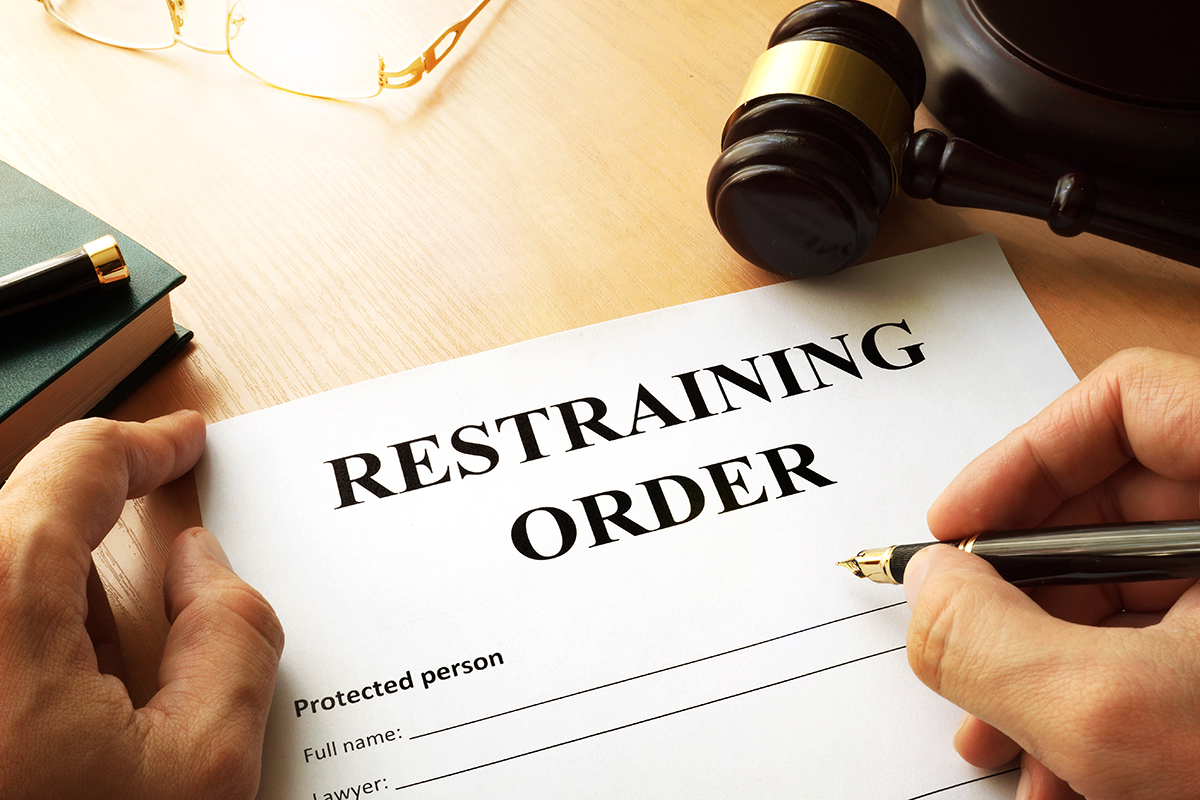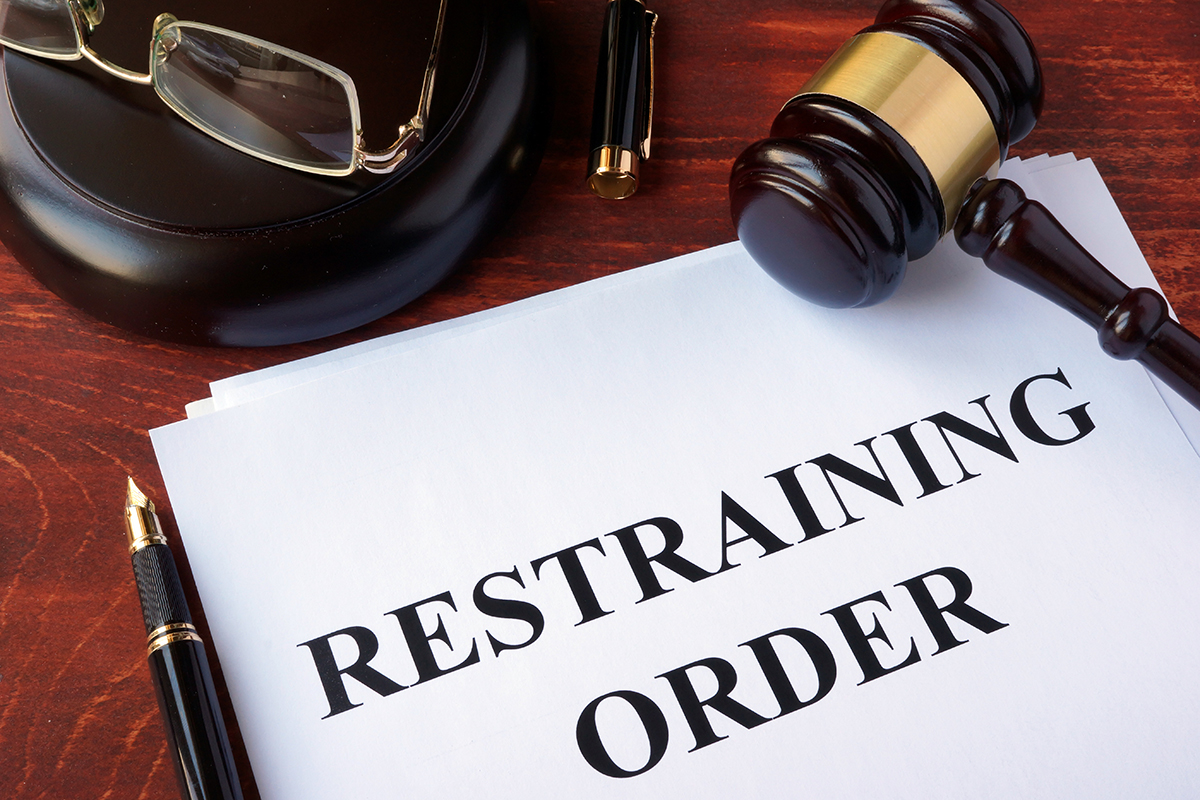Top 5 Reasons Husbands Initiate Divorce
USA Teenage Divorce Statistics
5 Signs of Financial Abuse in Marriage
Creating the Perfect Parenting Plan
Are People Happier After Divorce?

About 90% of initial civil petitions for domestic-violence restraining orders are granted. This includes various types of orders, such as those for domestic violence, stalking, and dating violence. [1] This prohibits the person with unsafe behavior from making any contact or being in close proximity to the petitioner, the victim.
A restraining order serves as a preventative measure to prevent the offender from inflicting further harm or harassment on the victim. By imposing restrictions, a restraining order aims to create a safe environment and provide peace of mind to the petitioner. Continue reading to discover the steps for filing a restraining order.
If you find yourself in a situation where you need protection from someone who is harassing or threatening you, a restraining order can provide legal protection and peace of mind. There are several types of restraining orders available to individuals based on their specific circumstances.
You may be eligible for a domestic violence restraining order If you are a victim of domestic violence. This type of order is intended to protect individuals who have been abused by a family or household member and requires proof of a recent act of domestic violence.
If you have experienced repeated acts of violence by someone who is not a family or household member, a repeat violence restraining order may be appropriate. This type of order is typically sought when the victim has been subjected to at least two acts of violence and requires evidence of the repeated violence.
Sexual violence restraining order can provide protection If you have been a victim of sexual violence. This type of order is specifically designed to protect victims of sexual assault or other sexual violence.
A dating violence restraining order may be suitable, if you are a victim of dating violence, a. This type of order applies to individuals who have been in a romantic or intimate relationship with their abuser and requires evidence of the dating violence.
A stalking restraining order may be necessary if you are being stalked or harassed by someone. This type of order can protect people who are repeatedly following, harassing, or threatening a victim. [2]

In Florida, the appropriate court for filing a restraining order depends on the location of the incident and the relationship between the parties involved.
If the incident occurred within the jurisdiction of a county court, such as a domestic violence incident or harassment within a single county, the appropriate court to file a restraining order would be the county court of that particular county. County courts deal with cases related to family and domestic matters, including restraining orders, within their specific jurisdiction.
On the other hand, if the incident involved parties from different counties, or if it falls under the jurisdiction of a circuit court, it would be appropriate to file the restraining order in the circuit court in Florida. Circuit courts have broader jurisdiction and handle cases related to major civil matters, including domestic relations and family law.
The relationship between the parties involved is also key in determining the appropriate court. If the parties are married or have a child in common, the restraining order is typically filed in the circuit court as part of a family law case. However, if the relationship is non-marital or non-parental, the county court generally handles the filing.
To file for a restraining order in Florida, you need to obtain the necessary forms. The first of these forms is the Petition for Injunction for Protection Against Domestic Violence (Form 12.980(a)), [3] which is used when you are seeking protection due to domestic violence. This form can be filled out by the petitioner, who must provide details about the incident(s) of violence and the victim(s) affected.
There are different forms for alternate forms of abuse. The Petition for Injunction for Protection Against Repeat Violence, Dating Violence, or Sexual Violence (Form 12.980-b) [4] is to be used in such cases. This form requires similar information to the standard domestic violence form.
To obtain these forms, you can visit the Florida State Courts website. They provide a comprehensive list of forms related to restraining orders, including the two mentioned above. The forms can be downloaded as PDF files directly from the website. You can visit your local courthouse or county clerk’s office, where they may also have these forms readily available.

You must carefully fill out all the required information on the forms. Provide details about why you are seeking a restraining order, including any dates, incidents, witnesses, or evidence that support your request. Ensure that your information is legible and thorough.
After completing the forms, review them to ensure accuracy. Sign and date each form where indicated. Be sure to follow any specific signing instructions outlined on the forms.
Take the completed and signed forms to the clerk’s office at your local county courthouse. Inform the clerk that you would like to file a petition for a restraining order. The clerk will file your forms and provide you with a case number, copies of the filed documents, and any additional information you might need.
After filing the paperwork, the court will schedule a hearing date. It is key to attend this hearing as it presents an opportunity to present evidence supporting the need for a restraining order. This may include documentation such as police reports, medical records, or photographs that demonstrate the threat or harm posed by the alleged abuser.
Testimonies from witnesses, such as friends or family members who can attest to the abusive behavior, can also strengthen the case. It is essential to abide by courtroom etiquette, show respect for the judge, and answer any questions asked truthfully and in a concise manner.
Following the hearing, the judge will review the evidence and testimony presented before making a decision. If the judge determines that the petitioner has provided sufficient evidence of abuse or harassment, they may grant a restraining order. The terms of the order will specify the duration and scope of the restrictions imposed on the alleged abuser.
Delivering the notification to the person responsible for abuse requires careful planning and consideration. The notification should ideally be conducted by a law enforcement officer, who can approach the situation with authority and sensitivity.
The process should include a clear and direct communication of the abuse allegations, emphasizing the unacceptable nature of the behavior and the legal and personal consequences that may follow if the abuse continues.
If you are interested in filing for a restraining order, Sacks & Sacks can assist you. Contact Sacks & Sacks today to schedule a consultation.

FAQs
Q. What happens after I file my petition for a restraining order?
Following the filing of a petition, a judge will assess for immediate and present danger of violence. If confirmed, a temporary injunction may be issued for up to 15 days, leading to a scheduled hearing for a final decision on a permanent injunction. [5]
Q. What types of restraining orders are available in Florida?
Florida law recognizes several types of injunctions for protection, including those against domestic violence, repeat violence, dating violence, sexual violence, and stalking. It is important to select the correct type of injunction when filing your petition. [6]
Q. Is there a fee to file for a restraining order in Florida?
No, there is no fee to file a petition for a restraining order in Florida. Additionally, the sheriff’s office will serve (deliver) the certified copies of the judge’s order to the respondent without any charge. [7]
Sources:
[1] Bureau of Justice Statistics Family Violence Statistics Including Statistics on Strangers and Acquaintances Reported and unreported family violence Murder of family members Family violence reported to police Family violence recorded by police State prosecution of family assault Federal prosecution of domestic violence Family violence offenders in prison Family violence offenders in jail. (n.d.). https://bjs.ojp.gov/content/pub/pdf/fvs03.pdf
[2] COMPARISON OF FIVE INJUNCTIONS FOR PROTECTION (MARCH 2017). (n.d.). Retrieved June 24, 2024, from https://www.flcourts.gov/content/download/216141/file/1-11-Comparison-of-5-protection-orders.pdf
[3] Petition for Injunction for Protection Against Domestic Violence. (n.d.). Florida Courts. Retrieved June 5, 2024, from https://www.flcourts.gov/Resources-Services/Office-of-Family-Courts/Family-Court-in-Florida/Family-Law-Forms/Domestic-Violence-12.980-Forms-A-E/Petition-for-Injunction-for-Protection-Against-Domestic-Violence
[4] ORDER SETTING HEARING ON PETITION FOR INJUNCTION FOR PROTECTION AGAINST ( ) DOMESTIC VIOLENCE ( ) REPEAT VIOLENCE ( ) DATING VIOLENCE ( ) SEXUAL VIOLENCE ( ) STALKING WITHOUT ISSUANCE OF AN INTERIM TEMPORARY INJUNCTION. (n.d.). Retrieved June 5, 2024, from https://www.flcourts.gov/content/download/685948/file_pdf/980b1.pdf
[5] Restraining Orders. (n.d.). Www.miamidade.gov. Retrieved May 20, 2024, from https://www.miamidadeclerk.gov/clerk/restraining-orders.page
[6] Overview for Petitioners. (n.d.). Florida Courts. https://www.flcourts.gov/Resources-Services/Office-of-Family-Courts/Family-Court-in-Florida/Domestic-Violence/Overview-for-Petitioners
[7] Restrainingorders | Broward County. (2024). Sheriff.org. https://www.sheriff.org/LE/Pages/CivilDivision/Restrainingorders.aspx
Sacks & Sacks Law — 2025 All Right Reserved